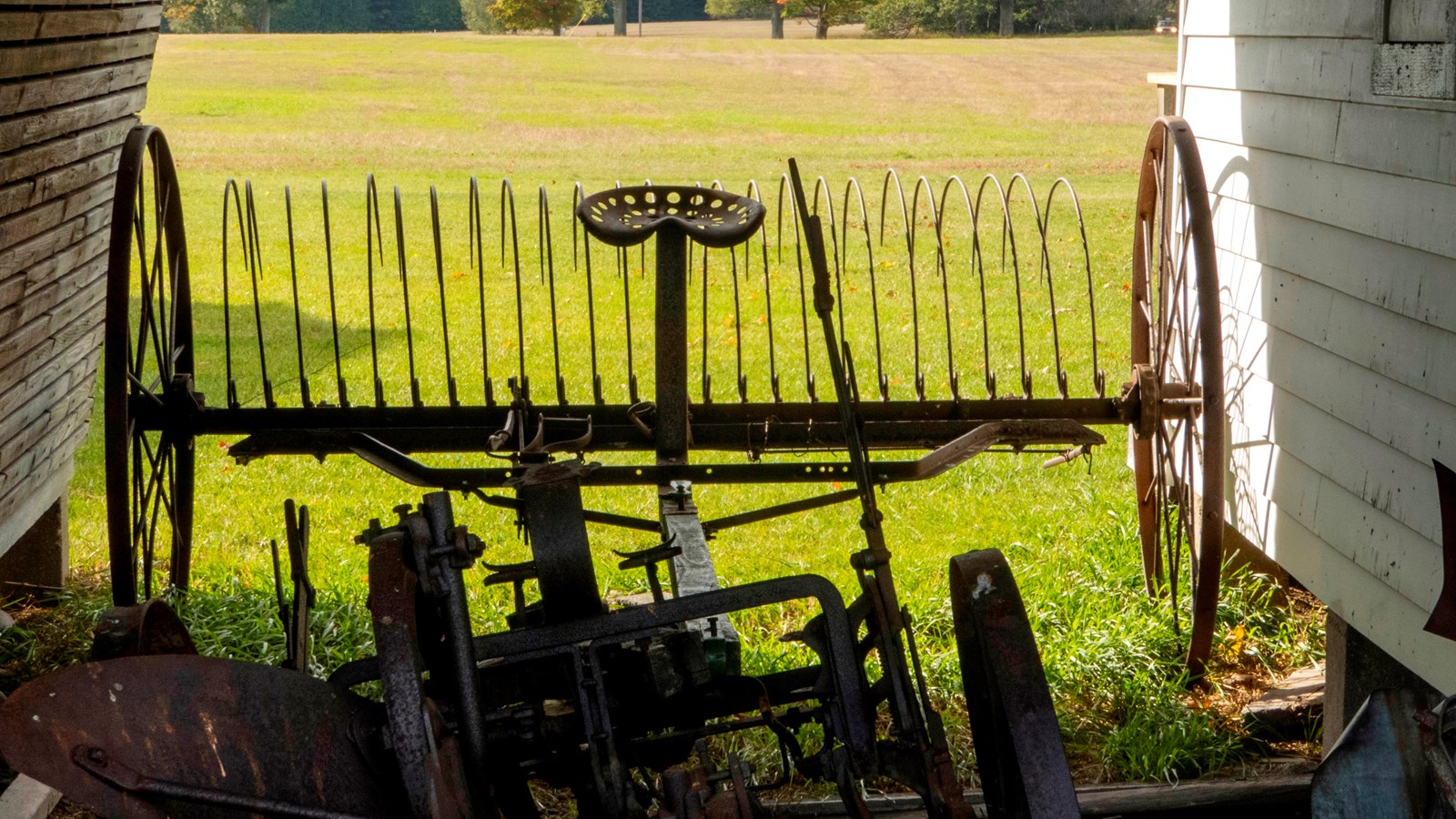Last updated: December 23, 2024
Place
Fredrick & Frederike Dechow Farm

NPS credit
The Dechow Farm has some of the best soil in Port Oneida which explains why it was one of the most productive farms. Frederick and Fredericke Dechow purchased the farm and built a log cabin in 1857. Sons John and Charles built the barn around 1890.
Grandson Fred built the new house around 1910: a showplace of modern style. A few years later, he was able to buy the neighboring farm just to the east of his original farm and add it to his land. The house and other buildings were removed, but the barn remains in the field to the east of the main Dechow buildings.
This farm is a good example of a working farm of the late 1940s with old structures adapted for new methods. The concrete silo and milking parlor indicate a commitment to dairy production. The large granary building and the small corn crib are typical for farms this far north. These farmers grew less corn because of the short growing season. A large chicken coop for raising fryers for market and another coop for a laying flock round out the barn yard buildings.
The Dechows raised apples and maintained a small herd of dairy cows. They sold milk, cream, and eggs to local resorts. According to a local resident, they had extensive orchards located between the house and pasture barn.
In a community where everybody's connected to somebody else, everybody takes care of everybody else. The Dechows often employed neighbor children. Laura Basch's first job was at the Dechow farm. She earned one dollar a week-big wages at the time-doing general housework, cooking, "anything that Mrs. Dechow wanted me to."
They also helped the neighborhood children by pulling teeth for the children. With no dentist nearby to fill cavities, folks would take their children down to Frank Dechow who would use his pair of forceps to pull unhappy teeth.
A row of sugar maple trees leads to a sugar shack built about 1944. The Dechows made about 20 gallons of syrup a year. During the war, when sugar was rationed, maple syrup was used to sweeten almost everything.
A hay loader in the field east of the farm reminds us of the worker bees during haying season. The hay loader gathered the loose hay from the field (before balers). Two men were up on the wagon to move the hay around and place it so that the load would stay balanced and packed in, and then it would go into the barn. A hay fork was used to put the hay away in the loft. They'd stick the fork a couple of feet into the hay, so that when the team of horses pulled the rope it would wind the hay up to the top of the barn. As the team continued pulling, the pulley would run down a track until it was over the hay mow. Another rope was then pulled to release the load. Workers then had to spread it in the mow, because it would only land in a big pile right down the middle of the mow, and it had to spread out to the edges.
